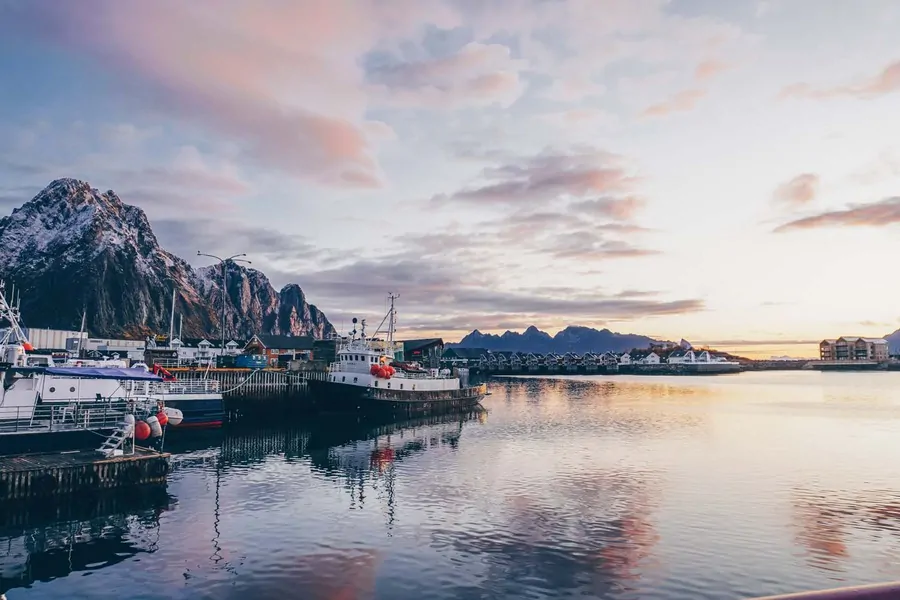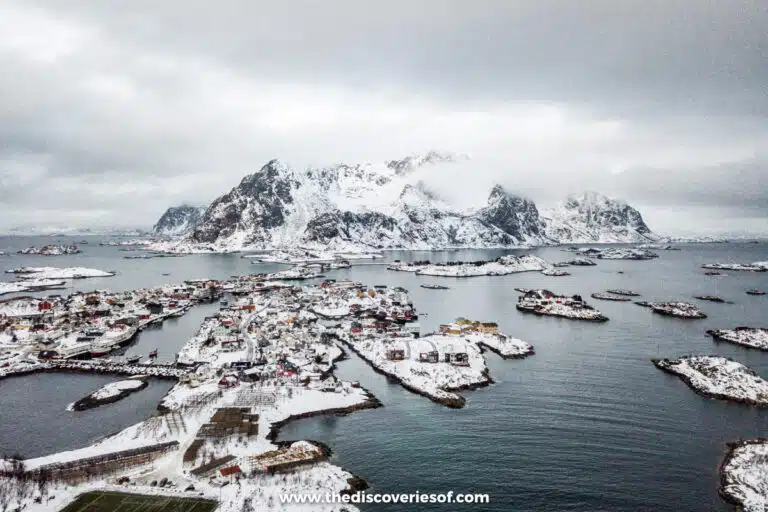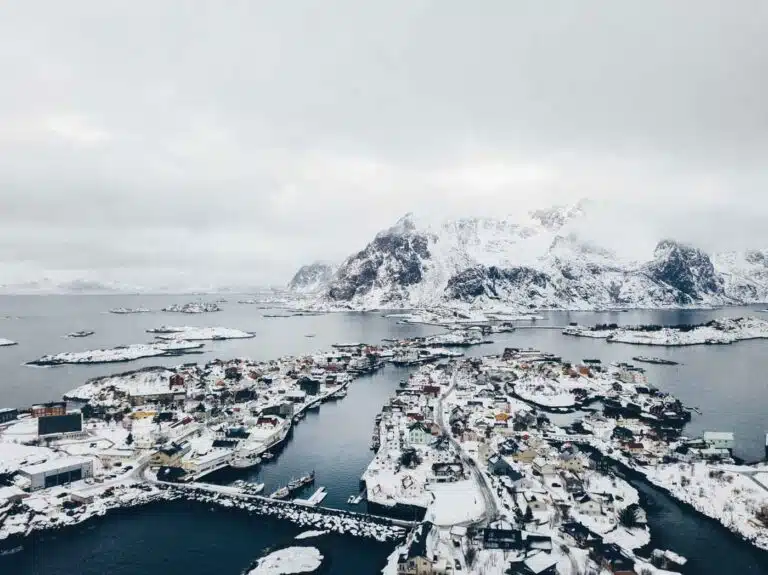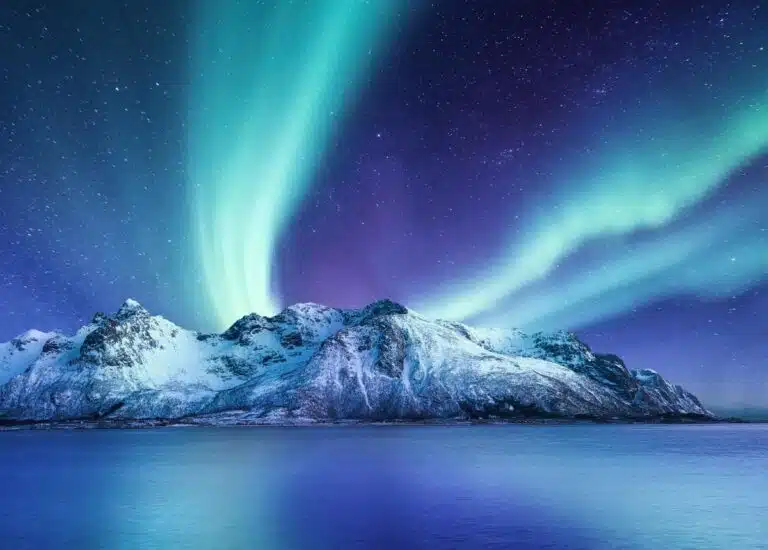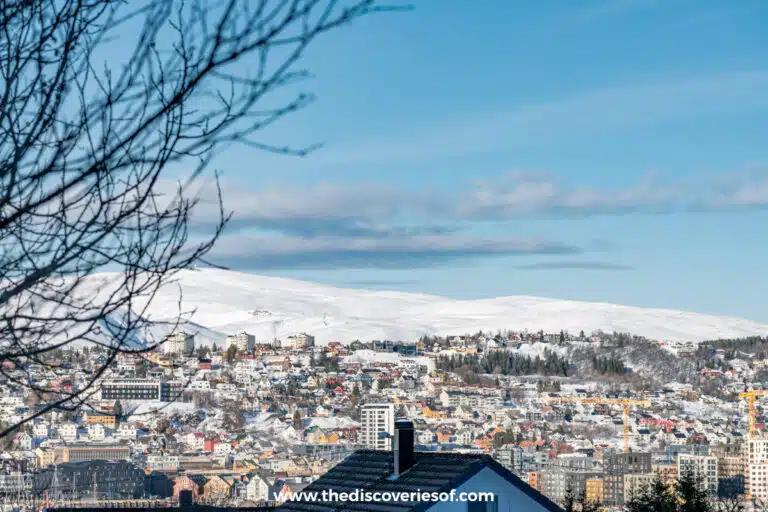The Lofoten Islands sit in Norway’s Arctic Circle, known for their otherworldly landscapes and thriving food scene. I headed on a three-day trip with some of the UK’s top chefs to discover a different side of Norway.
The water was glassy – so limpid and calm that you could have mistaken it for The Caribbean were it not for the snow atop the mountains. That and the icy wafts of breath that came out of my mouth every time I opened it.
I’d dressed, bleary-eyed, layer upon layer and then layers more, sweating inside the prep room. Were all these clothes really necessary?
My favourite, a padded onesie in a fetching red on black combo that also doubled up as a floatation aid were I to fall aboard, left me looking like a strange cross between a swaddled baby and the Michelin Man.
We were on a three-day trip to the Lofoten Islands with the Norwegian Seafood Council, led by their ambassador, the Michelin-starred chef Daniel Galmiche. A rowdy bunch of chefs, journos and… well, me, we’d set out to learn more about the stellar ingredients for which the area was famed. How better to start than fishing?
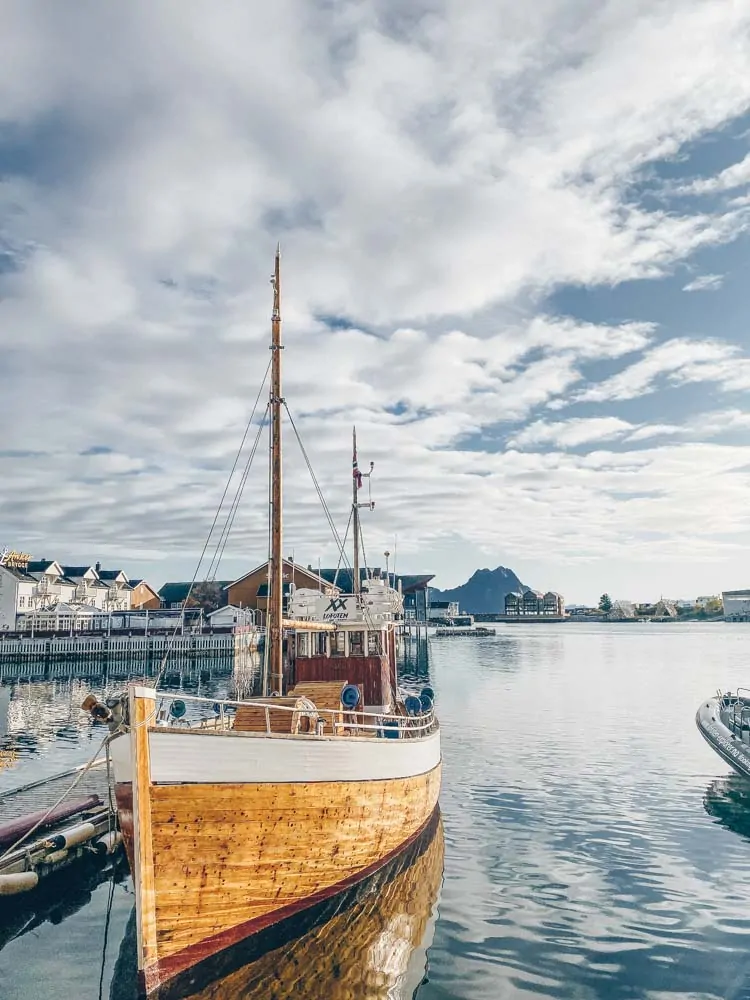
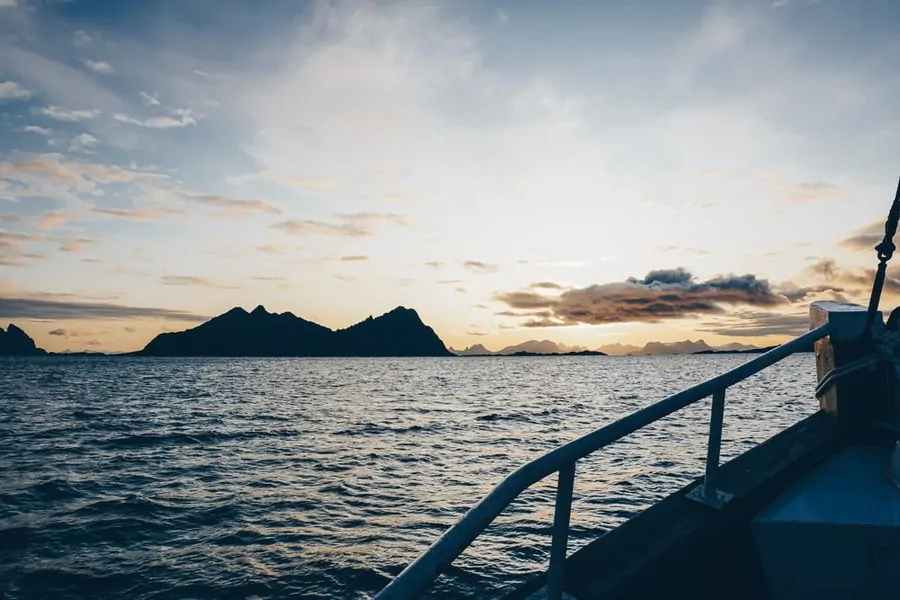
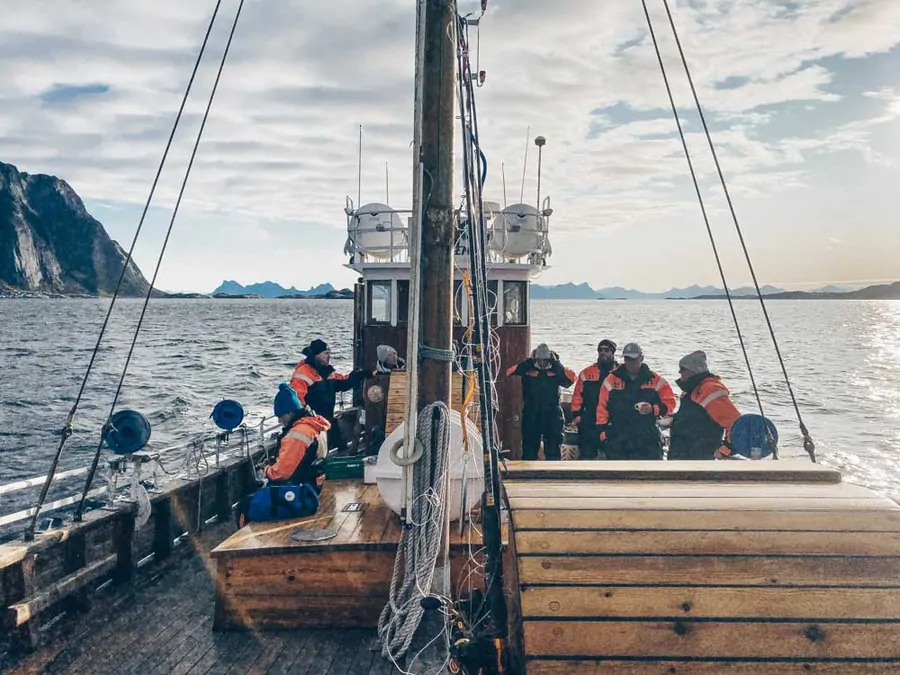
Once trussed, there was the matter of descending the surprisingly steep ramp to the platform on which the boat was docked. “There’s such a thing as being too careful,” one of my companions observed wryly as he watched me inch my way downward.
With so much distraction, it took me longer than it should have to register the scenery unfolding before me. It was only when I’d stepped onto the boat and settled into a relatively sheltered spot did I take the time to appreciate the dramatic view gradually being lit by the early morning rays.
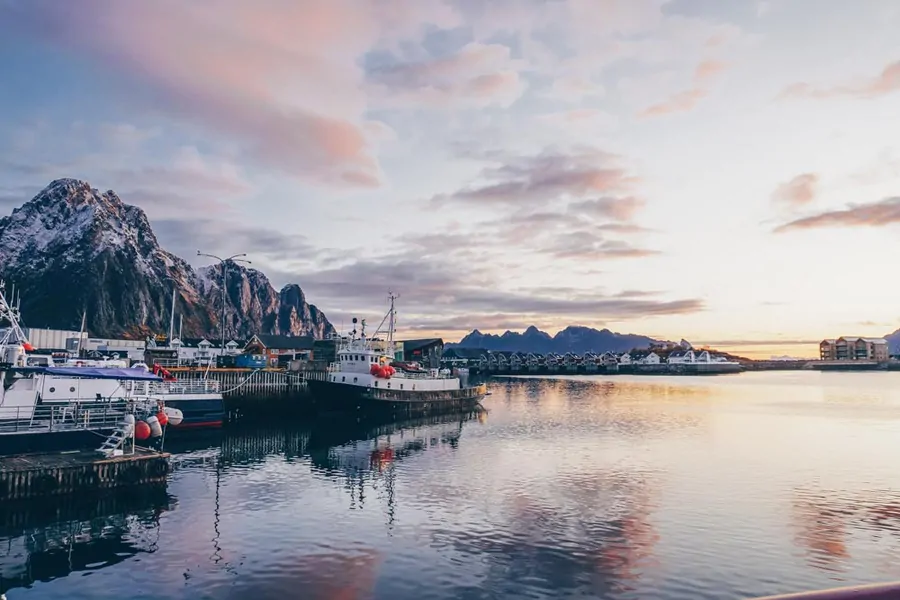
Standing at the helm of the boat as it plied its way towards the sunrise, I felt a shiver of anticipation.
Welcome to The Lofoten Islands
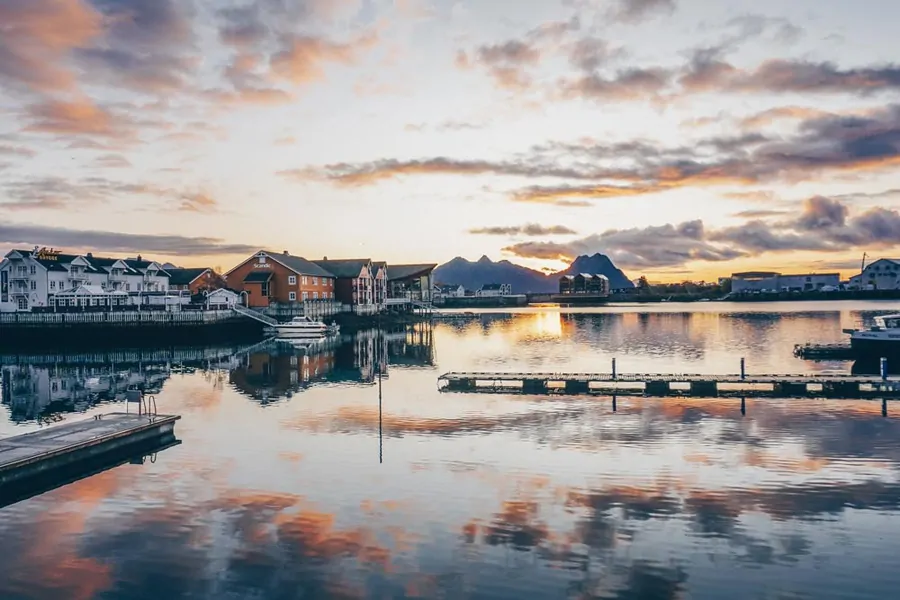
The Lofoten Islands. They’d long been on my radar – a hazy dream of fishing villages perched in the Arctic Circle. Unsurprisingly, the reality was sharper and beyond anything I’d expected.
Once in a while, you go to a destination so far removed from your day to day life that it doesn’t feel real. That was Loftoten – the opposite of grimy, gritty London, so much so that it was difficult to believe that the journey here had taken less than a day.
In Lofoten, the days start with mountains and water, life still revolves around the elements and fishing is big business.
The fish caught here feed the plates at the high-end tables in chic British restaurants, making their way into our homes in filleted, packaged products we turn into lazy meals after a long day in the office.
Here, there’s no such separation between the catch and the product: what’s caught in the morning is served in the afternoon, the pungent smell of stockfish sits low on the air as you walk around Svolvaer, our base during the trip.
The long Arctic night had settled in before we’d stepped off the plane for the final stage of the journey the day before, the tail end of a trip that had involved two flights, a changeover and a two-hour bus ride – the latter all the more tantalising for the sudden glimpses of terrain revealed by the moonlight.
It was only now, as the boat bobbed gently on the water, that the day unwrapped what the previous night had held close – miles of still water, framed by a harbour so picturesque it almost hurt.
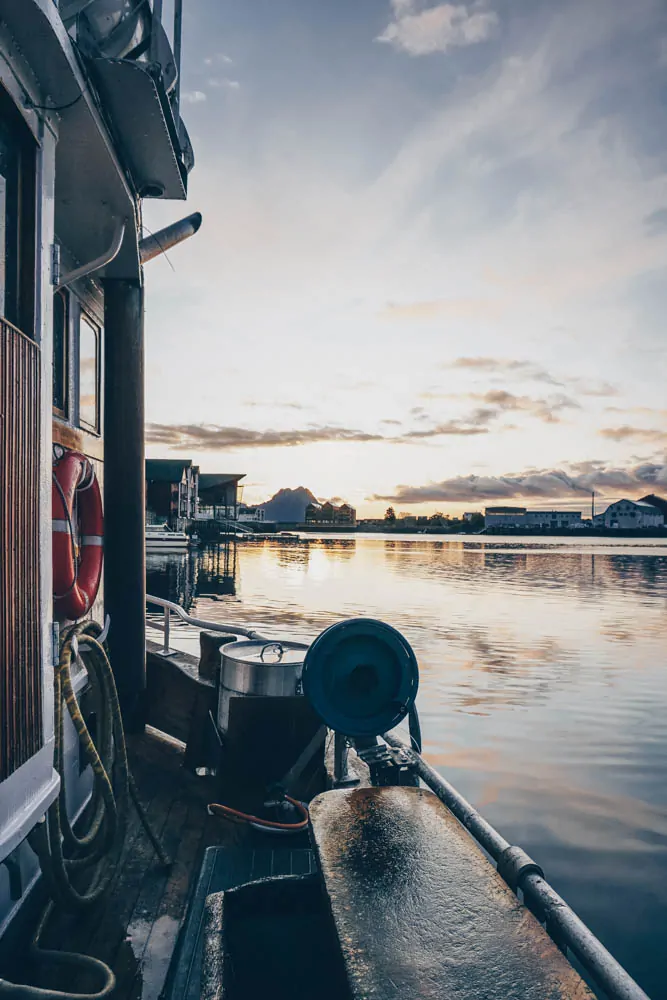
Setting Sail into Vestfjorden
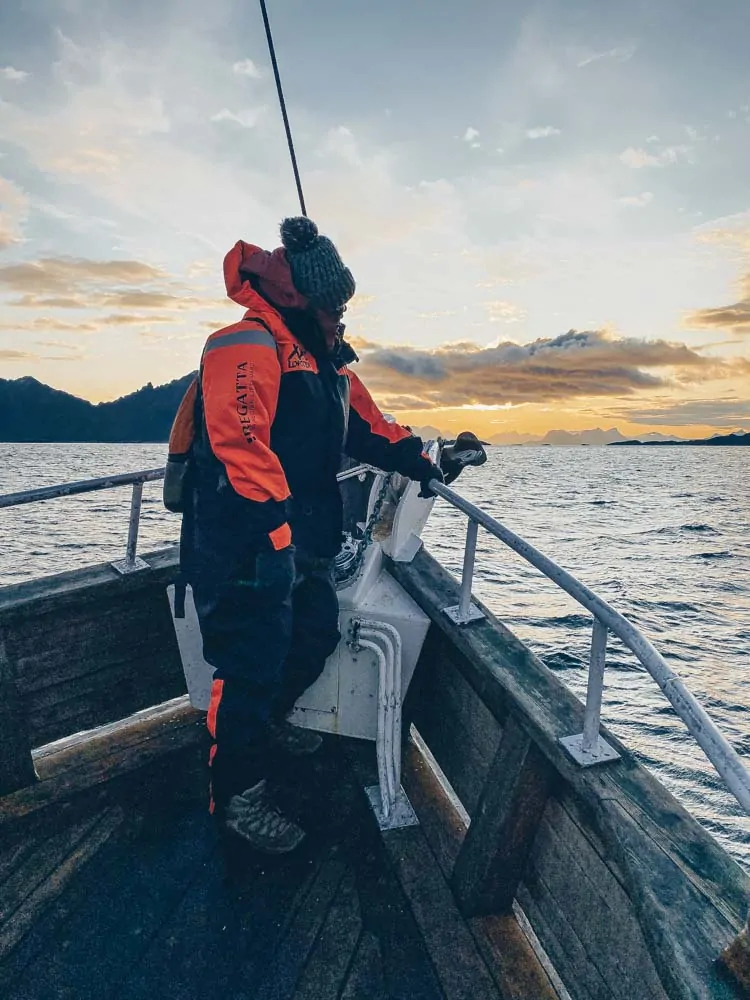
Looking out, our guide Geir pointed to a distant spot “We’ll sail to that fjord,” he started, “then the captain ,” here, he gesticulated to the boat’s cabin where the young skipper, Marcel sat aloft “will help us find our haul using the fish finder”.
A fish finder? I’m no stranger to deep water fishing but this was new to me. Other fishing trips have been more of the cast off and see approach, but this is Lofoten where fishing is king.
The home of the world’s largest cod stocks and of the legendary “skrei” (pronounced skrey) Norwegian Arctic Cod that have played no small part in shaping the islands since Viking times.
It’s not just cod that inhabit these waters: coley, halibut, saithe and haddock glide the depths of the fjords surrounding the islands. There are others too, some too difficult for Google Translate to pick up on yet nevertheless there to be caught on our lines.
A Morning’s Catch
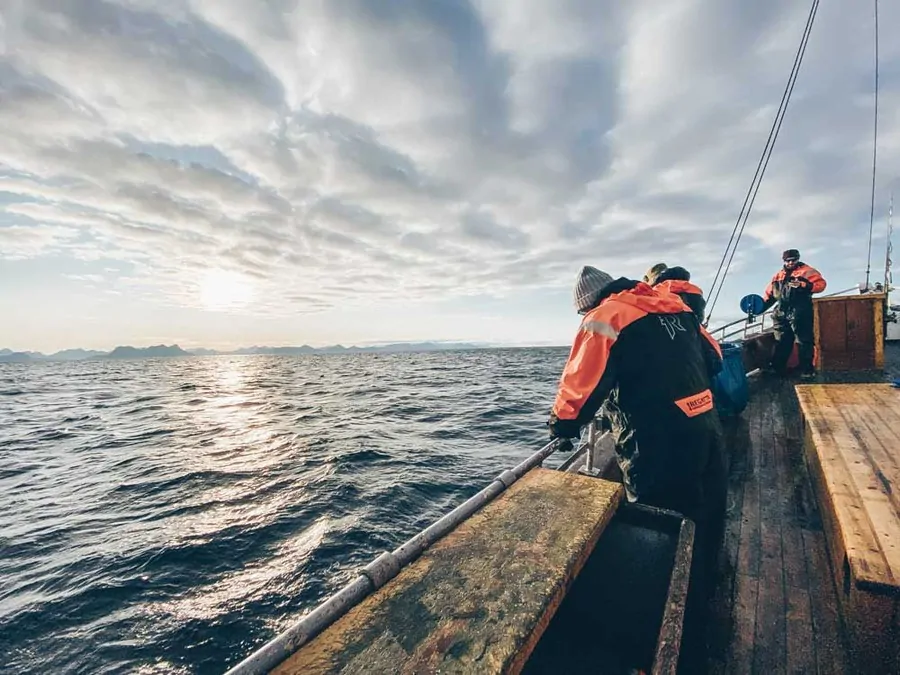
The time between casting off and feeling that telltale pull was too short for me to be sure. The line had barely reached the bottom, leaving just enough time for me to lift and drop in the fluid motion Geir had shown us, once, twice and there it was.. the tug I’d been hoping for.
I was doubtful as I reeled it in, peering into the water for the first sign of failure – yet there it was – a fish, wriggling and live on the line, flipping on the deck and then still in the container after Geir dealt it a sharp blow and detached it from the hook.
Five times I pulled in the line. Two were failures, a further three successes – albeit one small enough we threw it back in the water.
Each time we drifted from the shoal, the captain would relocate us using the fish finder to get the crew back on track again. Nothing quite matched those first few minutes, where the fish had practically jumped into the boat – yet it didn’t matter.
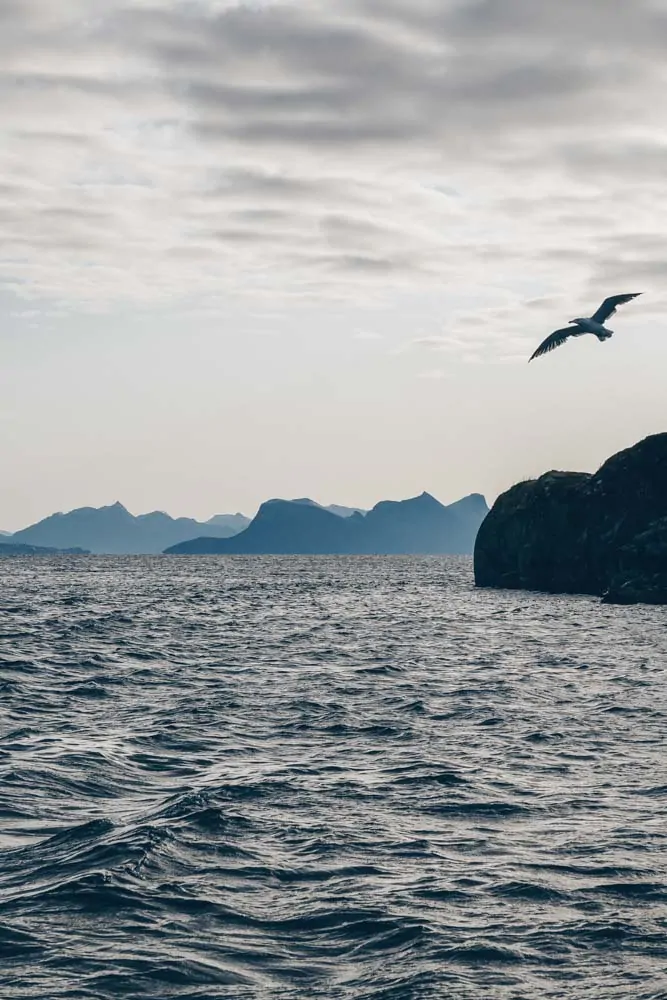
We weren’t the only creatures aware of our catch. The skies, so still before we started, swarmed with gulls angling for their undue share.
Geir tossed a few pieces out to lure a sea eagle hovering above, but it was the gulls who profited, the eagle remaining aloof – preferring instead to glide in circles before moving out of sight.
Industry and Tradition
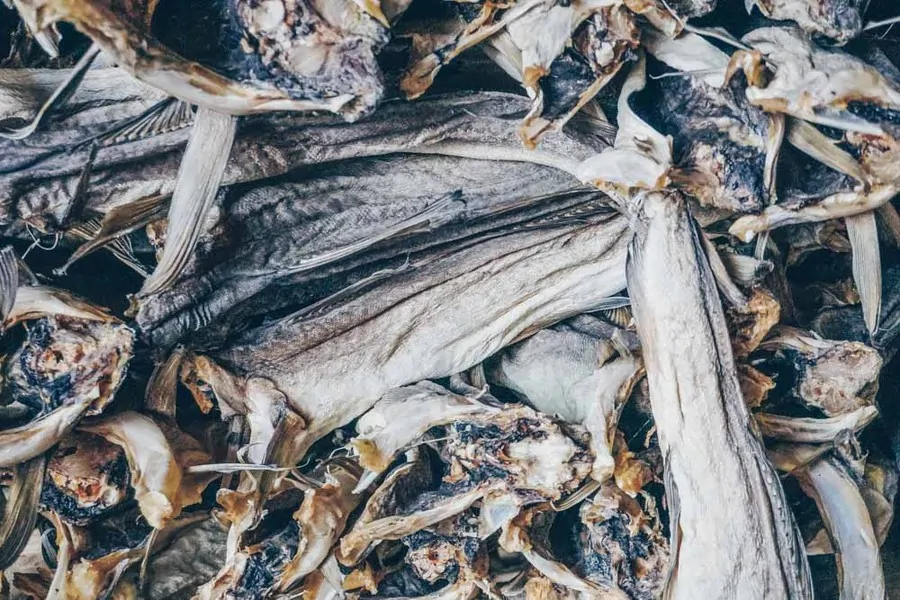
If fishing has shaped the development of the Lofoten Islands, stockfish has walked hand in hand every step of the way.
I’d wondered what the weird triangular structures were dotted along the mountainsides – eerie skeletons that surely had a story to tell. Stockfish was the answer I’d been looking for.
“Stockfish is to Norway what Bacalao [salted cod] is to Portugal but they are not the same,” Jorn, the head of stockfish producer L Berg + Sonner started as he led us into the giant warehouse. “Stockfish is air-dried but not salted and requires a delicate balance of conditions to happen effectively.”
The Lofoten Islands just so happen to be the perfect meeting place for those conditions: you need a fresh catch (most stockfish is made from cod, although ling, pollock, haddock and other breeds are also used), stable temperatures – like Goldilocks not too hot or too cold – and salty winds to aid the drying process.
Thriving in this industry, particularly as a smaller producer, requires the delicate balance of a trapeze artist, one that’s under increasing threat from climate change (locals are justifiably worried about the increasingly erratic weather and the potentially devastating effect of a change in the Gulf Stream).
Yet the demand for stockfish thrives. A popular ingredient in Italy and Nigeria in addition to its native Norway, it’s used in a variety of dishes, each culture adding its own flavours and bent to the versatile ingredient.
Unsurprisingly, it appeared on our plates more than once throughout the course of the trip – at dinner at Paleo Arctic in Svolvaer was the first time I’d ever tried it; firm flesh giving way to a flavour more delicate than I’d expected, yet more than robust enough to stand up to the chorizo, paprika and carrots it had been paired with.
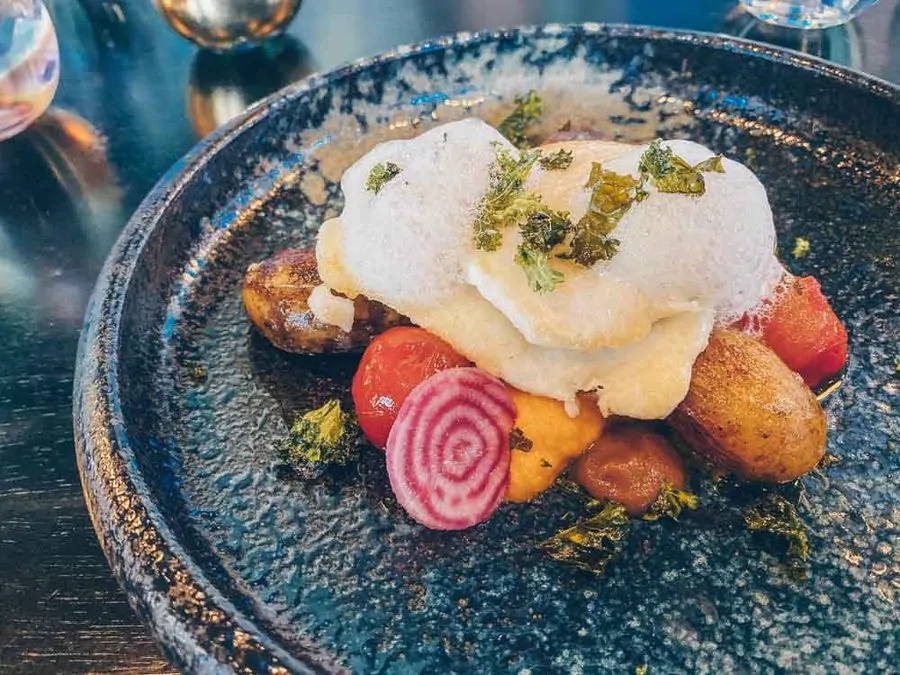
At other times it popped up, resting jauntily on a bed of potatoes and buttery vegetables, topped with a light foam that contrasted nicely with the crumbly roasted kale sprinkled atop. Plenty of inspiration for the packets I packed into my suitcase to bring home.
Scope for Innovation: Lofoten Seaweed
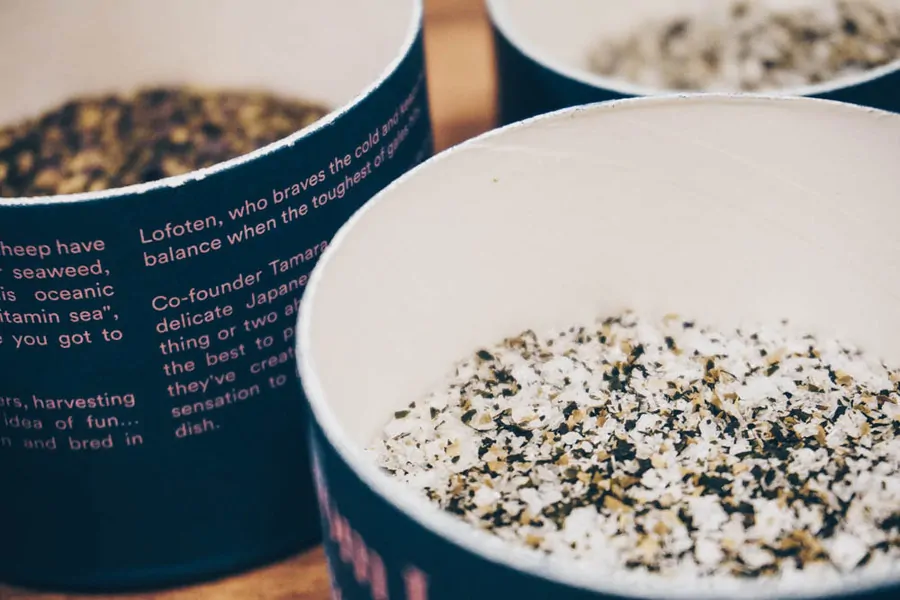
Fish may dominate Lofoten’s food industry, but a recent wave of innovation has brought a new range of upstarts, shaking up the horizon.
Lofoten Seaweed is one such company, the brainchild of a local Norwegian, Angelita, and a Kiwi (Tamara) with a Japanese mother.
Between Angelita’s knowledge of the islands and Tamara’s understanding of the product’s potential uses (her mother always cooked extensively with seaweed), they saw the way to creating a range of artisan products using the high-quality seaweed that thrives in the waters surrounding the islands.
Returning to the area she grew up in was an experience for Angelita “When we started going out harvesting, we’d be out at 6, 7 in the morning, gathering the seaweed when we’d just hear a “hello” and it would be my father checking to make sure we were OK,” Angelita laughs.
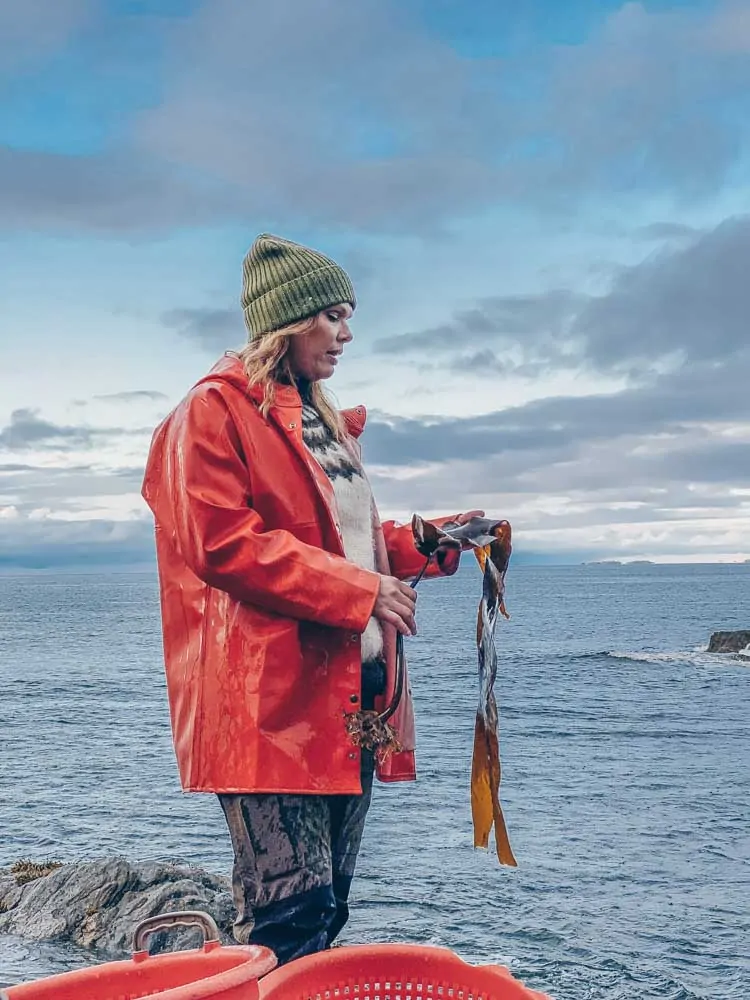
The company may have grown beyond the two founders setting out alone during the season to harvest, but local traditions still hold sway. The smaller of their two drying facilities sits in Angelita’s fathers old rorbu – the traditional fishing huts that pepper the coastline, dots of bright colour above the steely water. Their main offices are in what had been Angelita’s childhood school.
The final products shine because of the stories behind them, not to mention the discerning quality that informs their production every step of the way. Seaweed sprinkles, an umami hit of stockfish and seaweed in the style of Japanese furikake, they’ve even incorporated it into cheese and chocolate – with successful results.
Even more unusual was the ocean truffle – a type of algae that, as the name suggests, has the unmistakable pungent tang of white truffles.
Quality and Skill: Lofoten Food Studio
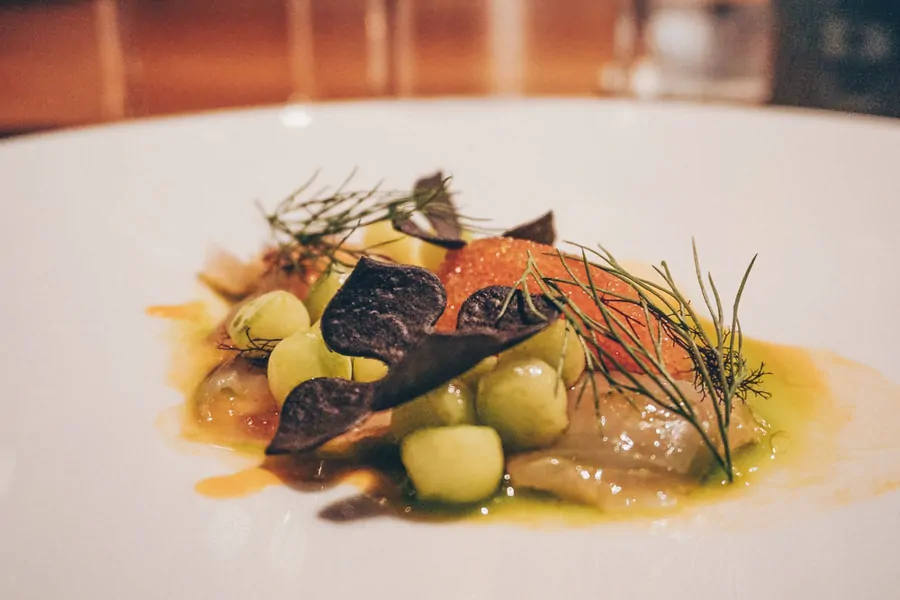
If the trip had been a gathering of snippets of information, it was at Lofoten Food Studio that the full story was told.
Local chef, Roy Berglund wanted to create a setting to showcase the calibre of ingredients available on his doorstep… yet in doing so, he’s gone far beyond the original mandate.
Silence fell on the table as we took a moment to appreciate the flavours that had just settled on our taste buds.
It takes a lot of skill to silence a table of boisterous writers and chefs, yet the dishes created by Berglund floored us – ripping apart everything we thought we knew about good food and rebuilding it with a finesse and lightness of touch that left me wishing the meal would never end.
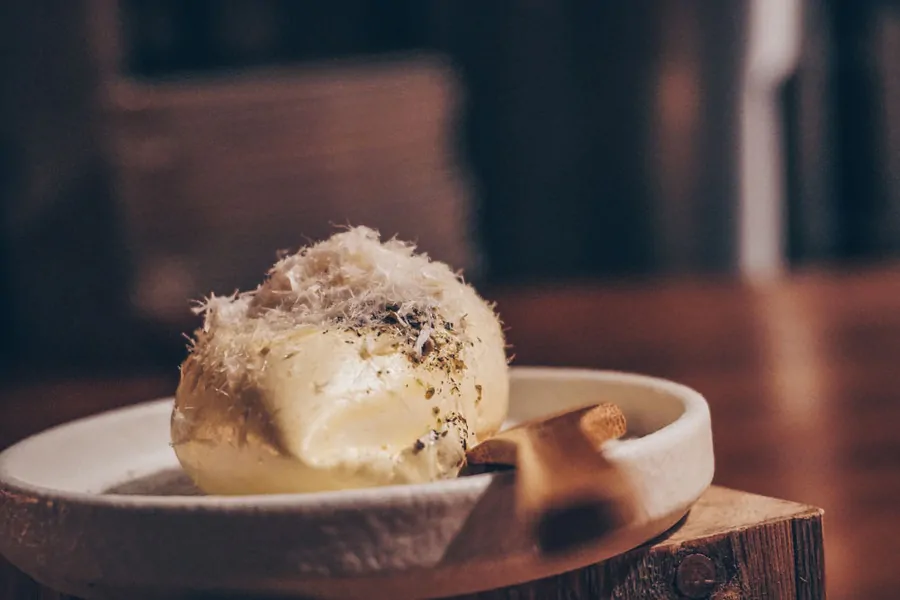
Whipped butter, topped with angelically light flakes of stockfish, a generous dollop whitefish roe snuggled up alongside small chunks of redfish fish, leaves of sea buckthorn and finished with a cucumber and dill oil… each course paid testament both to Berglund’s incredible imagination and to the quality of the local ingredients he works with.
Around the table, a rather fierce debate over personal favourites was hampered by the steadfast acknowledgement that each and every single one of us had, in reality, loved it all.
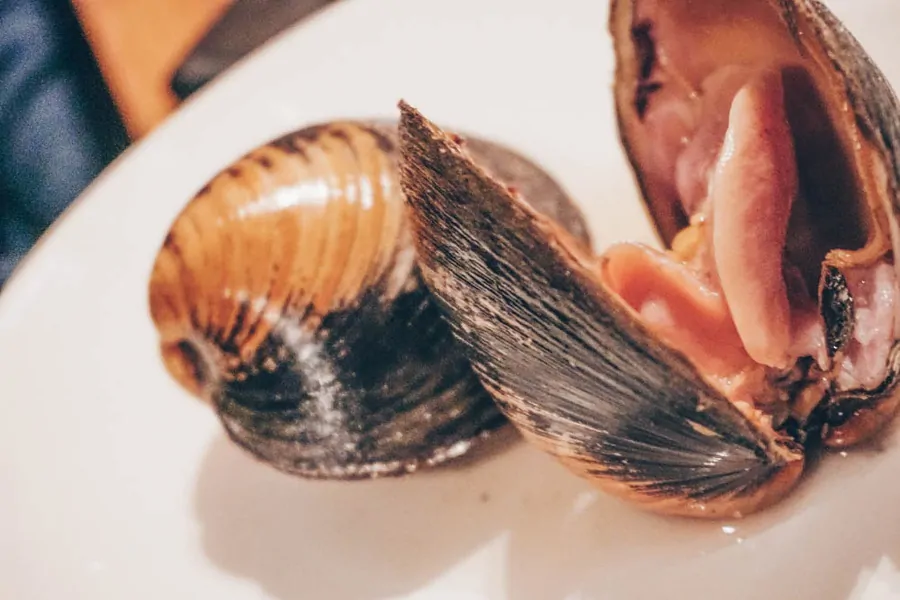
For me, it was a toss up between the raw scallop bathed in a rich sauce that boasted the roe, chives and local apples amidst its list of ingredients.
This is probably an opportune time for a word on the scallops – forget those watery nuggets of oozy liquid that too often masquerade themselves by the name, these were dense and firm and so tasty that I toyed with the idea of volunteering as Berglund’s sous-chef right there in exchange for the pleasure of eating them again.
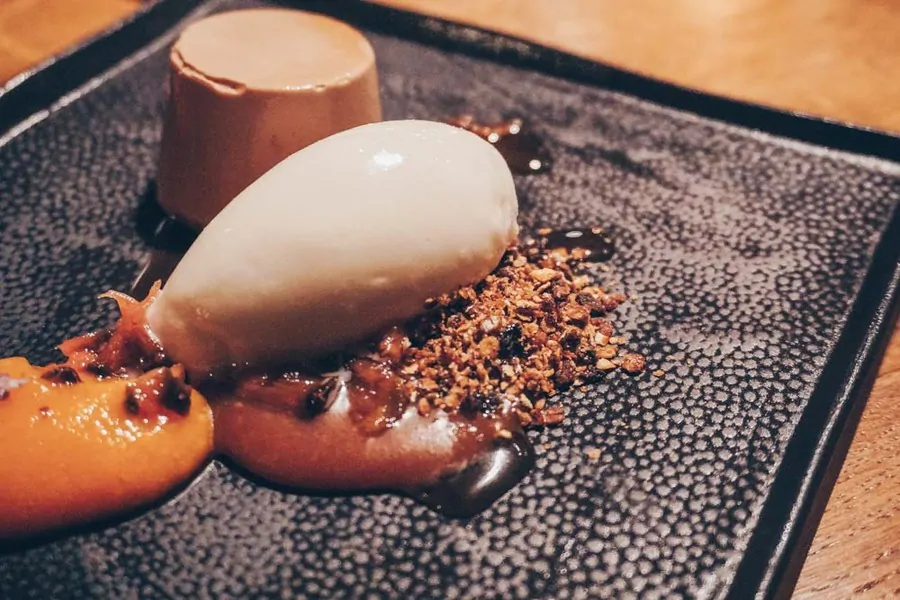
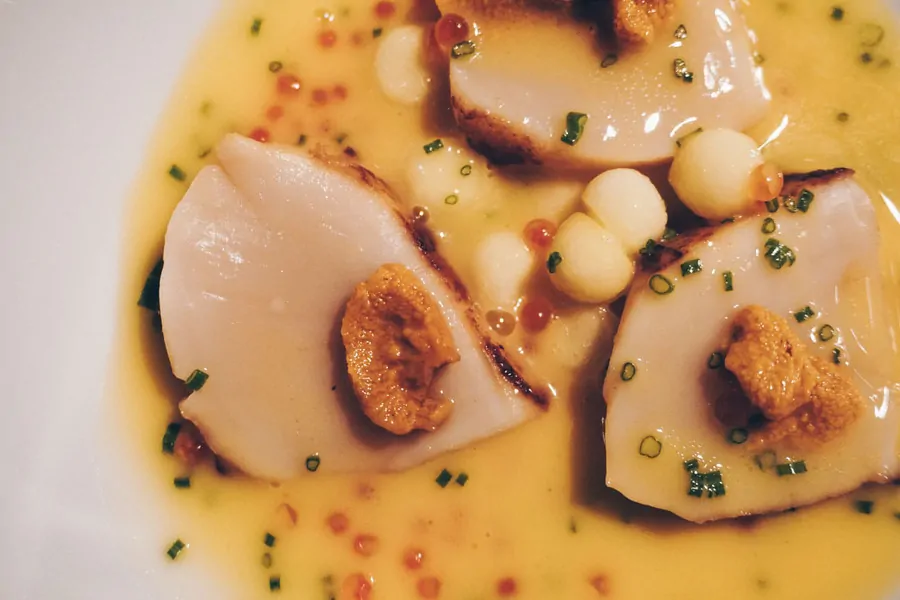
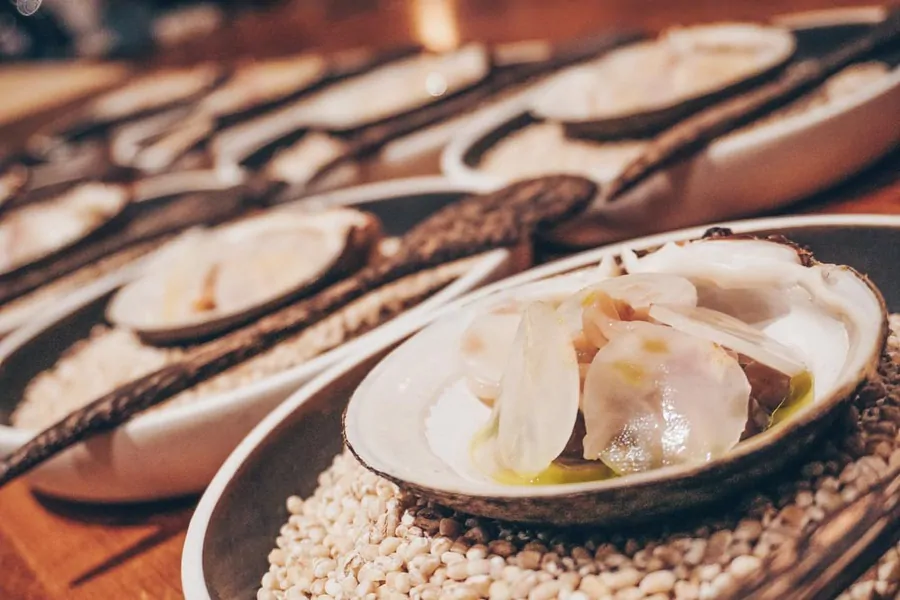
The other contender was a parcel of mushrooms, cushioned between feather-light layers and swaddled in a rich cream and herb sauce.
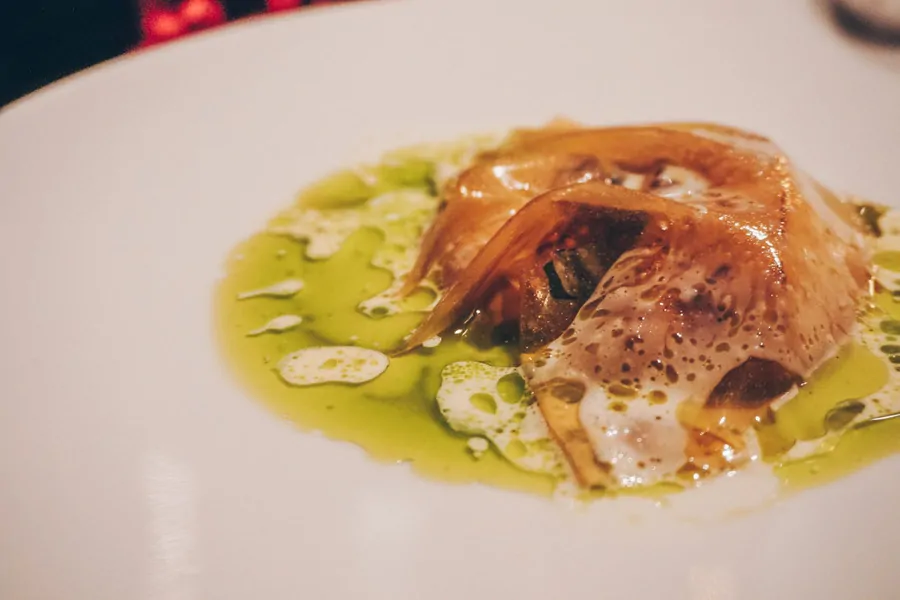
We ate with unrestricted relish, using the bread to mop up every drop of leftover sauce, each of our plates returning to the kitchen gleaming clean – notable by the absence of any remaining morsel of the course they’d flourished just a few minutes prior.
By the time it came to leave, we’d abandoned all pretence at formality, embracing Berglund heartfelt hugs, as if we could convey some measure of the joy and pleasure of the evening back to him, whilst also keeping the greedy memories of the succession of dishes and wines that now sat in our stomachs.
I thought about that meal as we boarded the plane. I doubt there was a member of the group who didn’t think about it that day, or in the days that followed.
What stayed with me, more than anything, was the potential of quality. The kaleidoscope of possibility that opens up when you source ingredients with an unflinching focus on the best. That’s where the true culinary adventure begins.
Practical Information for Planning a Trip to the Lofoten Islands
First up, I’ve written a whole travel guide about visiting the Lofoten Islands and another for visiting Norway so you should start your planning there. Then these handy tips will help.
Getting There
Flying to the Lofoten Islands invariably requires a change in Oslo. SAS and Norwegian both fly from Oslo to Evenes, a two hour drive away from Svolvaer.
Where to Stay
We stayed in Thon Hotel Svolvaer – a four-star hotel with views of the harbour. Rooms are cosy and well-designed and the hotel is (rightly) famed for its rather brilliant and very extensive breakfast.
Love This? Save and Share on Pinterest
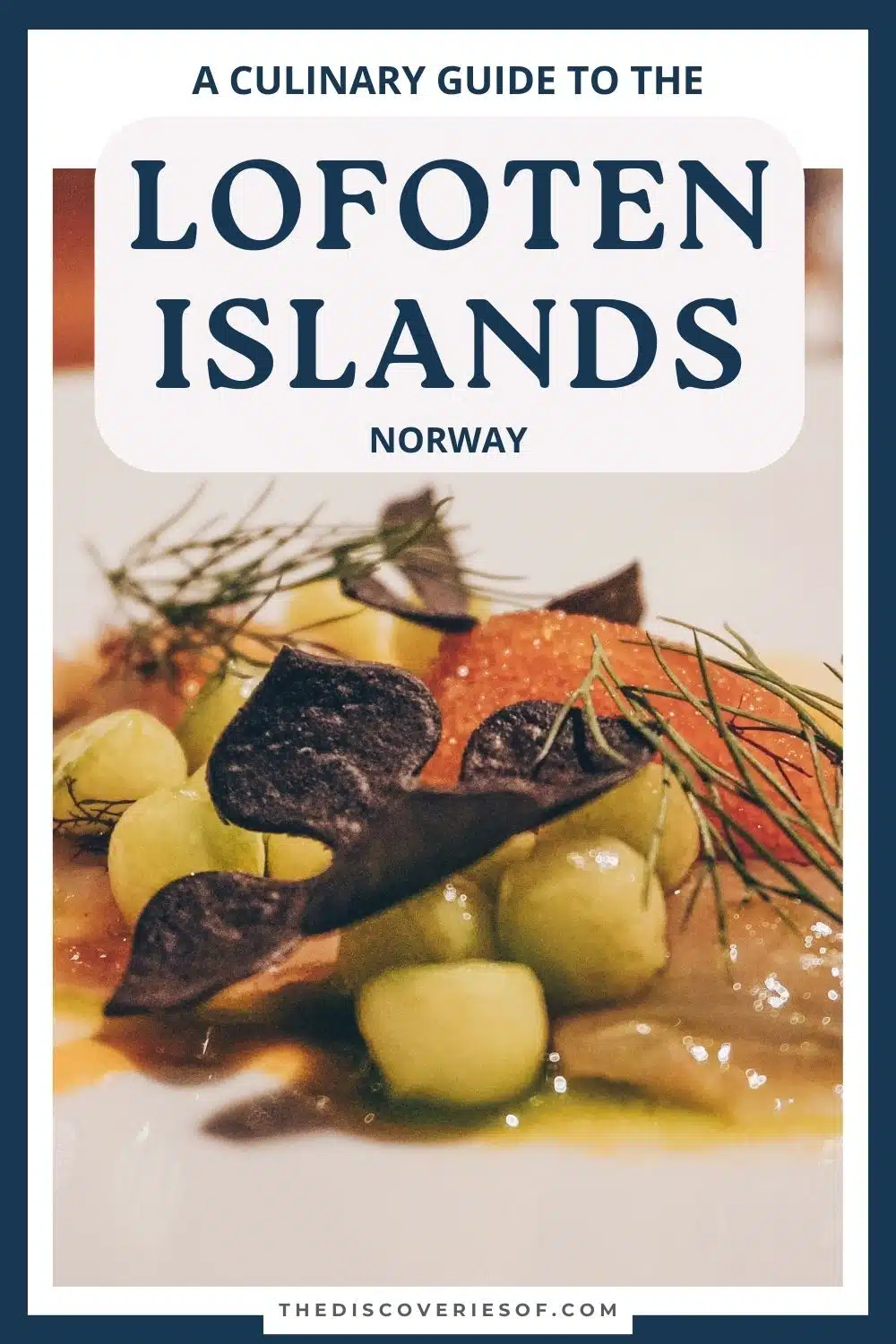
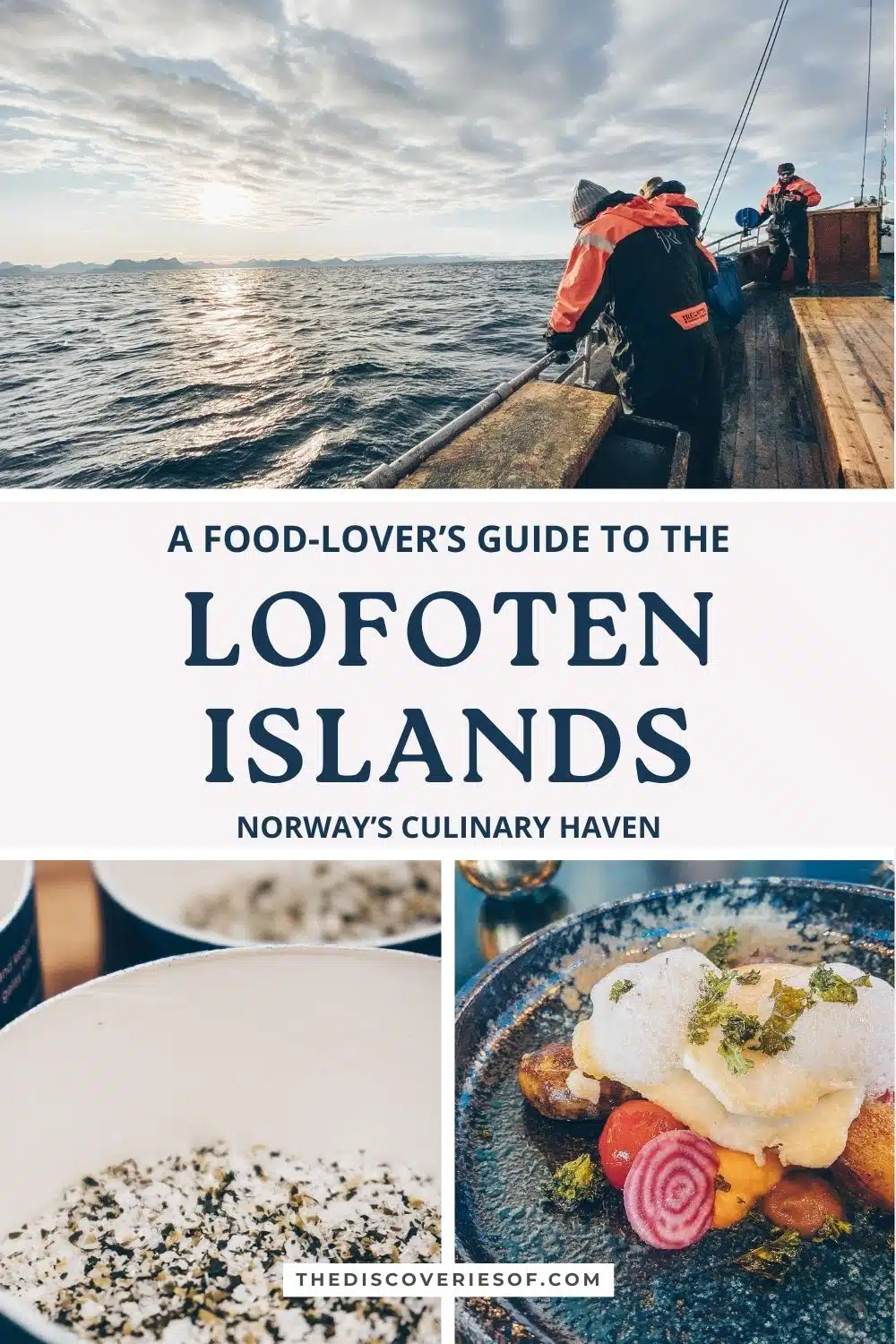
I was hosted by the Norwegian Seafood Council on my trip to the Lofoten Islands. As ever, my thoughts and opinions are very much my own (as if you couldn’t tell).

